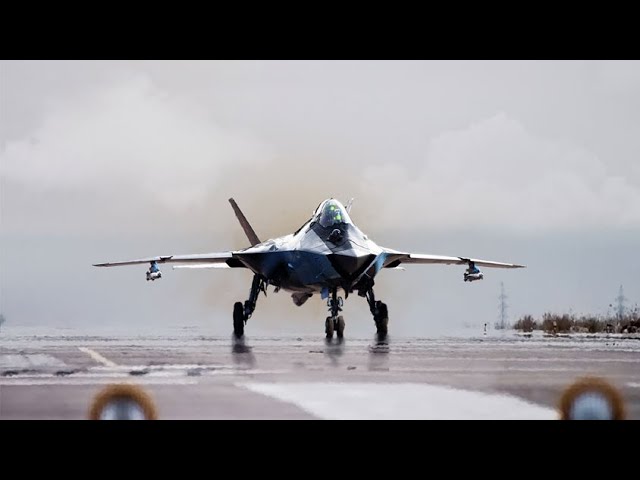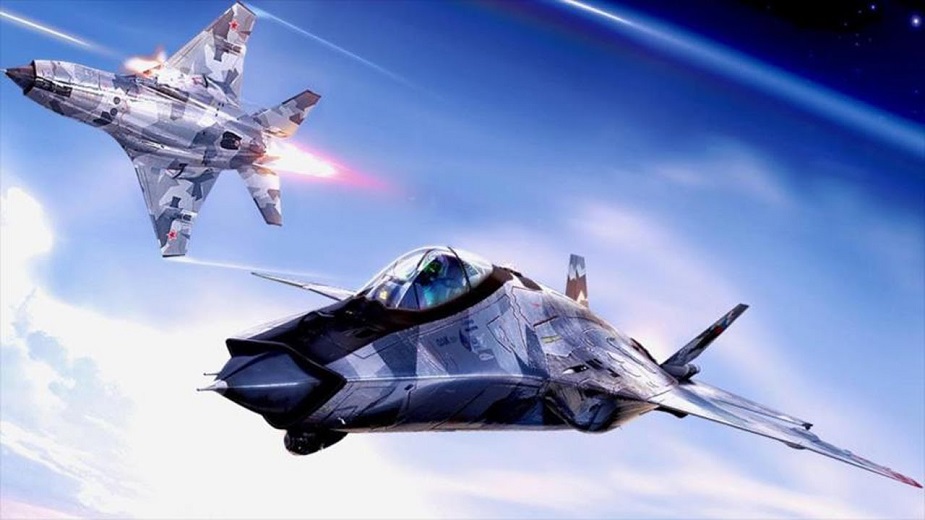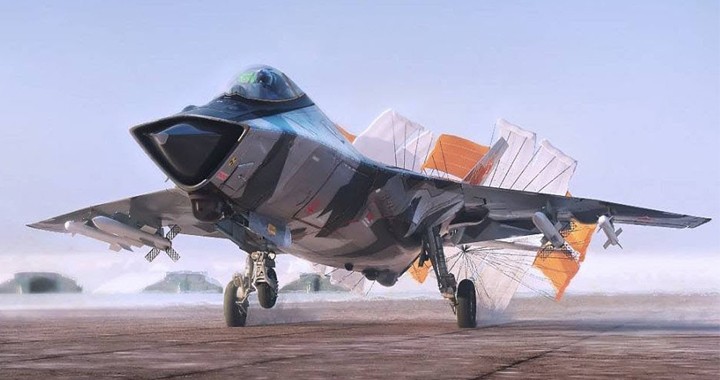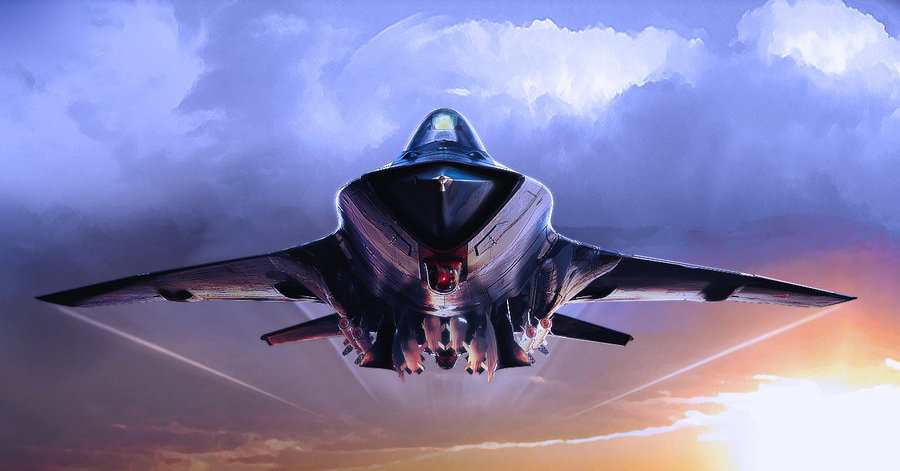According to some experts, the MiG-41 will be considered a 5 ++, or 6 generation fighter.

Introduce
It is not the Su-57 but the MiG-41 stealth aircraft that Russia is quietly developing that can defeat the F-35 and make America the most worried. The statement was quoted by the Russian RIA news agency as written in Defense News article.
The United States and its allies are currently restless because there are reports that Russia is continuing to implement the MiG-41 aircraft project with many improvements compared to the previous one.
The Mig-41 project, also known as the PAK DP prospective air complex for long-range interception, was commissioned by Mikoyan Design Center in collaboration with Sokol Aircraft Plant. The project was launched in 2013 on the basis of the results of projects implemented in the 1990s of the last century, including MiG-701, Mikoyan MiG-301 and Mikoyan MiG-321.
The MiG-41 interception aircraft is expected to replace the MiG-31 in the near future and together with the Su-57 will create the air power of the Russian Aerospace.

Mikoyan Mig-41
A top secret project
According to some experts, the MiG-41 will be considered a 5 ++, or 6 generation fighter. One of the key challenges in the near future that the MiG-41 will face may be supersonic fighters, traditional threats from cruise missiles and bombers of potential enemies. In addition to the manned version, the unmanned version of the MiG-41 is also being considered.
The MiG-41’s information is kept strictly confidential, but this interceptor is likely to be based on the MiG-31. This is perfectly reasonable as it will save money and take less time to research. However, Russian officials said that the MiG-41 would be a completely a new aircraft, and not a deep upgrade version of the MiG-31.
The Mig-41 will probably use the Izdeliye 30 engine currently developed for the Su-57. MiG-41 will possess all the advantages, combining the use of lessons learned from the design and thirty years of use experience of its predecessor MiG-31, as well as inheriting the essence of previous generation aircraft.
Information leaks
The MiG-41 project has been known for a few years, but it has never had a clear picture of its shape. Everything about the MiG-41 up to this point only exists as a simulated graphic.
According to CEO Tarasenko, Mikoyan will apply new materials to create a new generation interceptor aircraft, integrated with advanced weapons and modern avionics. The new aircraft can be operated in the Arctic, becoming a reliable link in the Russian border protection weapon system.
The US press said that the most special feature of this fighter is that it can operate outside of Earth, in outer space. Of course it is not considered a space station but it can operate in the stratosphere.
It is expected that in the next few years Russia will complete the prototype of this aircraft, and it can reach speeds of 5,000 km/h. The 𝐛𝐢𝐫𝐭𝐡 of MiG-41 will officially occupy the world’s fastest interceptor aircraft position of MiG-31, an interceptor was created in the 1980s, has a horrific speed of Mach 2.83, equivalent to 3,000 km/h.

Mikoyan Mig-41
The MiG-41 will be a super modern heavy interceptor fighter with a combat range of 1,500 km, able to reach most of Russia’s vast territory in the shortest possible time, which can penetrate any air defense system and capable of intercepting supersonic targets. This MiG-41 will be equipped with a new means of destruction, the R-37 long-range air-to-air missile, and hypersonic missiles.
It is likely that MiG-41’s weapons with an estimated range of 700 to 1,300 km will be hidden inside the fuselage. It is reported that new RVV-BD missiles with dual-mode solid fuel engines are being developed for this potential fighter.
Design leaks
The Topwar website posted pictures of the alleged MiG-41, which had an elliptical air intakes in front of the nose, similar to the MiG-21. Under the plane there are 3 to 4 circular stations that can be sensors of laser defense systems. Other graphical images of the MiG-41 show that it has a relatively short body, only equipped with a single engine with two vertical tail wings.
According to some sources, the MiG-41 fighter will not focus too much on the stealth feature because the laser defense system will make up for this problem. Instead, the design of the aircraft will focus on maneuverability, load of weapons to create overwhelming firepower before the enemy.
Analysts say the idea of making interception fighters has become obsolete, as modern air defense missiles are the best way to destroy air targets at long ranges. The global trend in recent decades is the development of multi-role fighters. So, is a high-speed interceptor suitable for Russian geographic conditions and an exception to this trend?

Mikoyan Mig-41
When will the Mig-41 appear?
Some Russian sources claim that the MiG-41 interceptor will be delivered to the Russian Aerospace Forces in the mid-2020s. However, many analysts believe that the MiG-41 will only be able to take off in 2035, and even 2040. It is clear that the MiG-41 will be costly to Russia and, if successful, will not be mass produced.
Many argue that the simultaneous implementation of both the MiG-41 and Su-57 programs is considered quite impossible because Russia’s defense budget is very limited.
Spending money on two advanced fighter research projects at the same time is extremely unreasonable, even for a country with a lot of money like the United States. So for now the MiG-41 is still a myth on the drawing board and how soon these planes will take off will be difficult to judge.
Soucre: military-wiki.com
A weapon that works in the stratosphere
Because it work in space, the airframe and their stealth technology are especially emphasized. It’s unclear how it will work, but experts say they will work in the same mode as a normal plane in stratosphere.
This information again surprised and extremely worried Americans. Remember, the United States is the country that holds the world record for the field of aircraft operating in space, the military aircraft using US X-15 boosters has reached an altitude of 107 km. So far in the world no aircraft can operate in the stratosphere. Americans only set records but with the help of experimental boosters, it’s hard to call them a combat vehicle.
Soucre: military-wiki.com





